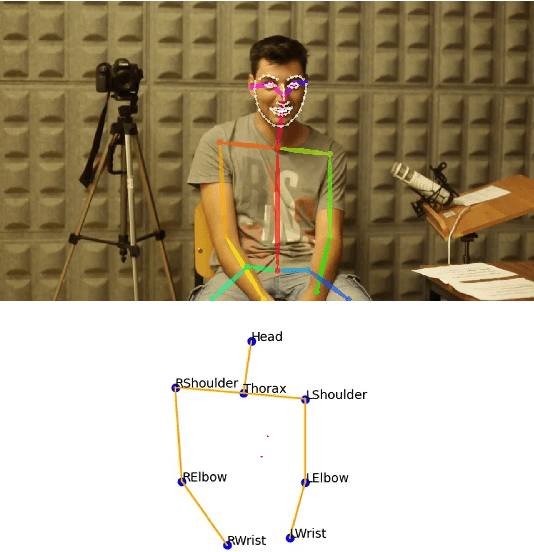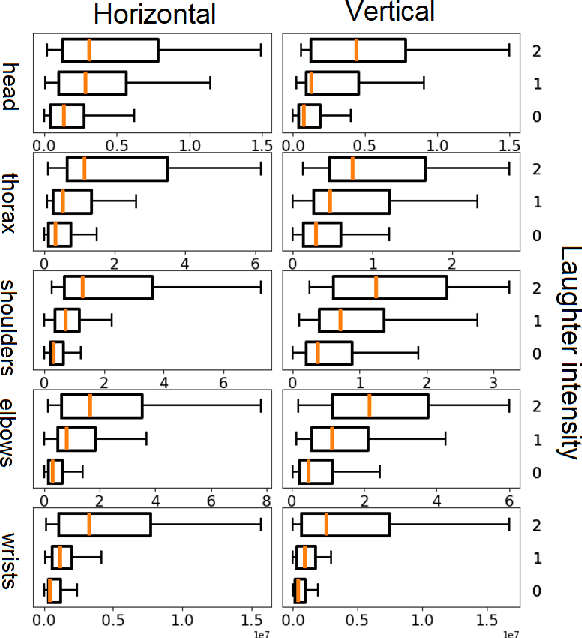Analysis of Co-Laughter Gesture Relationship on RGB videos in Dyadic Conversation Contex
Paper and Code
May 20, 2022



The development of virtual agents has enabled human-avatar interactions to become increasingly rich and varied. Moreover, an expressive virtual agent i.e. that mimics the natural expression of emotions, enhances social interaction between a user (human) and an agent (intelligent machine). The set of non-verbal behaviors of a virtual character is, therefore, an important component in the context of human-machine interaction. Laughter is not just an audio signal, but an intrinsic relationship of multimodal non-verbal communication, in addition to audio, it includes facial expressions and body movements. Motion analysis often relies on a relevant motion capture dataset, but the main issue is that the acquisition of such a dataset is expensive and time-consuming. This work studies the relationship between laughter and body movements in dyadic conversations. The body movements were extracted from videos using deep learning based pose estimator model. We found that, in the explored NDC-ME dataset, a single statistical feature (i.e, the maximum value, or the maximum of Fourier transform) of a joint movement weakly correlates with laughter intensity by 30%. However, we did not find a direct correlation between audio features and body movements. We discuss about the challenges to use such dataset for the audio-driven co-laughter motion synthesis task.
 Add to Chrome
Add to Chrome Add to Firefox
Add to Firefox Add to Edge
Add to Edge